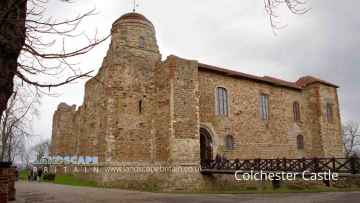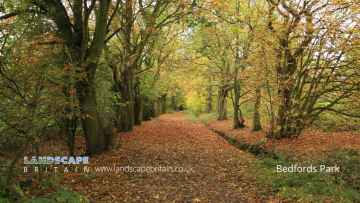Brentwood
Brentwood is a Town in the county of Essex.
There are great places to visit near Brentwood including some great towns, castles, woodlands, airports, historic buildings, cities, villages, country parks, shopping centres, parks and nature reserves.
There are a several good towns in the Brentwood area like Colchester, Epping, Maldon, Southend-on-Sea, Saffron Walden, Braintree, and Basildon.
Places near Brentwood feature a number of interesting castles including Colchester Castle.
Woodlands to visit near Brentwood include Epping Forest, and Bedfords Park.
London Southend Airport, and London Stansted Airport are great places to visit near Brentwood if you like airports.
Historic Buildings to visit near Brentwood include Audley End House and Gardens, and Chelmsford Cathedral.
The area close to Brentwood boasts some of the best cities including Chelmsford.
Hatfield Peverel is a great place to visit close to Brentwood if you like villages.
The area around Brentwood's best country parks can be found at Thorndon Country Park.
The area close to Brentwood boasts some of the best shopping centres including Lakeside Shopping Centre.
Don't miss Bedfords Park's parks if visiting the area around Brentwood.
Don't miss Bedfords Park's nature reserves if visiting the area around Brentwood.
Brentwood History
There are some historic monuments around Brentwood:
Places to see near Brentwood
History of Brentwood
The borough was on a crossroads, where the Roman road from Colchester to London crossed the route the pilgrims took over the River Thames to Canterbury. A chapel was built in or around 1221, and in 1227 a market charter was granted. Its growth may have been stimulated by the cult of St. Thomas the Martyr, to whom the chapel was dedicated: the 12th-century ruin of Thomas Becket Chapel was a popular stopping point for pilgrims on their way to Canterbury. The ruin stands in the centre of the high street, next to the tourist information office, and the nearby parish church of Brentwood retains the dedication to St. Thomas of Canterbury. Pilgrims Hatch, or ‘Pilgrims’ gate’, was probably named from pilgrims who crossed through on their way to the chapel. It is likely, however, that Brentwood’s development was due chiefly to its main road position, its market, and its convenient location as an administrative centre. Early industries were connected mainly with textile and garment making, brewing, and brickmaking. During the Peasants’ Revolt of 1381, Brentwood was the meeting place for some of the instigators, such as John Ball and Jack Straw. They apparently met regularly in local pubs and inns. The first event of the Peasants’ Revolt occurred in Brentwood, when men from Fobbing, Corringham and Stanford were summoned by the commissioner Thomas Bampton to Brentwood to answer as to who had avoided paying the poll tax. Bampton insisted that the peasants pay what was demanded of them. The peasants refused to pay and a riot ensued as Bampton attempted to arrest the peasants. The peasants moved to kill Bampton, but he managed to escape to London. The rioters then, fearing the repercussions of what they had done, fled into the forest. After the riot the peasants sent word to the rest of the country and initiated the Peasants’ Revolt. The Essex assizes were sometimes held here, as well as at Chelmsford. One such pub was The White Hart (now a nightclub called Sugar Hut Village and showing little of its original historic interest), which is one of the oldest buildings in Brentwood; it is believed to have been built in 1480 although apocryphal evidence suggests a hostelry might have stood on the site as much as a hundred years earlier and been visited in 1392 by Richard II, whose coat of arms included a white hart. The ground floor was originally stabling and in the mid-1700s the owners ran their own coach service to London. On 13 September 2009, the building and roof suffered significant damage during a fire. Marygreen Manor, a handsome 16th-century building on London Road, is mentioned in Samuel Pepys’ diaries and is said to have been often visited by the Tudor monarch Henry VIII when Henry Roper, Gentleman Pursuant to Queen Catherine of Aragon, lived there in 1514. It is now a hotel and restaurant. In 1686 Brentwood’s inns were estimated to provide 110 beds and stabling for 183 horses. There were 11 inns in the town in 1788.




















